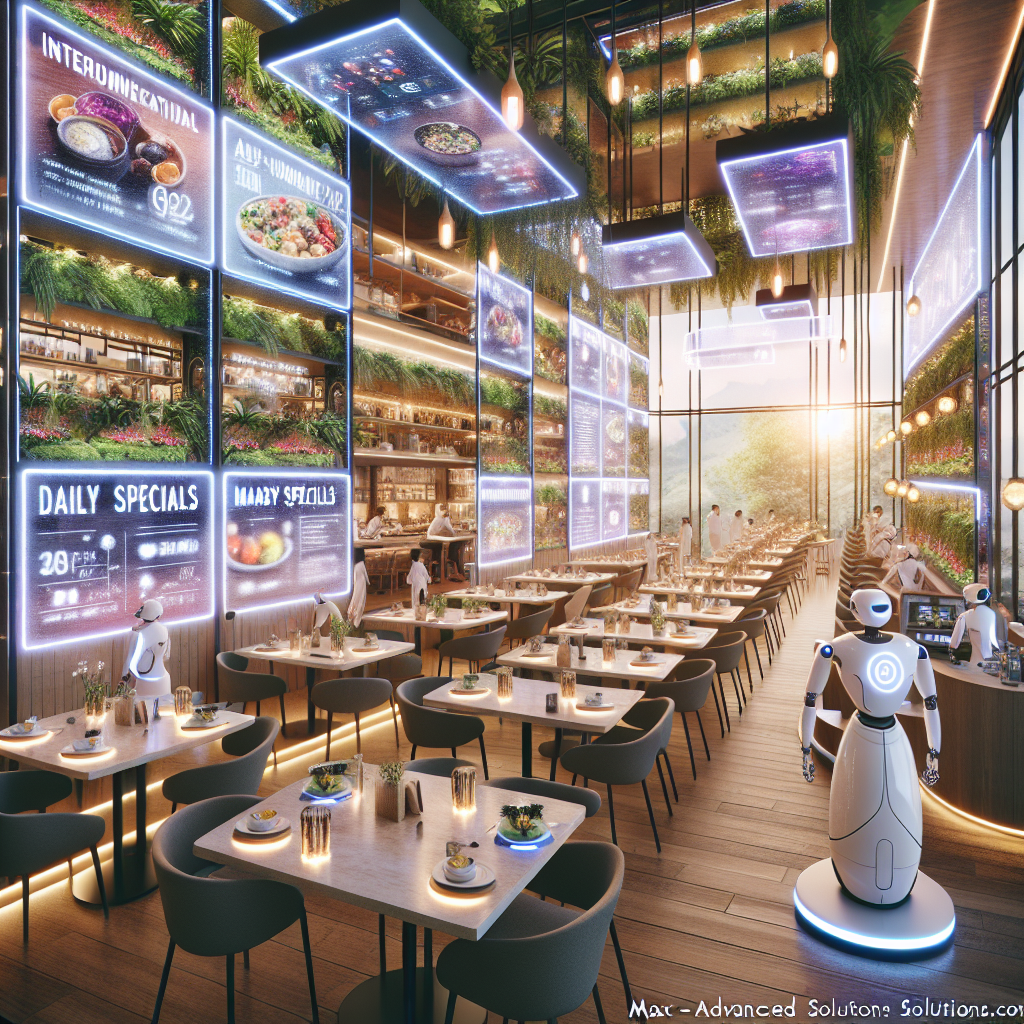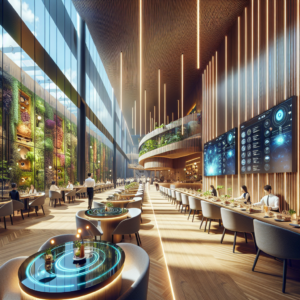Revolutionizing Restaurant Design in 2025: Enhancing Guest Experiences

As we venture into 2025, the realm of restaurant design is undergoing a transformation that is as dynamic as it is innovative. In an industry where guest experiences reign supreme, the emphasis is increasingly on creating spaces that are not only aesthetically pleasing but also functionally flexible. Consequently, the future of restaurant design is poised to elevate dining experiences through a blend of technology, sustainability, and adaptability.

Technology in Restaurant Design 2025: Creating Seamless Experiences
Moreover, smart restaurant design plays a pivotal role in enhancing the dining experience in 2025. The integration of smart technologies is revolutionizing how guests interact with their environment. For instance, from AI-powered reservation systems to interactive digital menus, technology is crafting a seamless and personalized dining experience. Additionally, this integration helps streamline operations, making the dining experience more efficient in line with modern restaurant design trends.

Sustainability in Restaurant Design 2025
Additionally, sustainability has become a cornerstone of smart restaurant design. Enthusiastic eaters are increasingly conscious of the environmental impact of their dining choices, and restaurants are responding accordingly. Consequently, sustainable practices are no longer just a trend but a necessity.
-
Eco-friendly Materials: Using sustainable materials like reclaimed wood, recycled metal, and low-VOC paint to create environmentally responsible interiors. Moreover, these materials contribute to a healthier indoor air quality, enhancing the overall dining experience.
-
Energy-efficient Systems: Implementing LED lighting, energy-efficient HVAC systems, and water-saving technologies to reduce the carbon footprint. As a result, restaurants can significantly lower their operational costs while promoting sustainability.
-
Local Sourcing: Designing spaces that highlight local culture and ecology, supporting local artisans and suppliers. Furthermore, this approach fosters community engagement and helps preserve local traditions.
Adaptable and Flexible Spaces
Furthermore, flexibility in design has become essential for restaurants aiming to optimize their seating and space configurations. As customer preferences and regulations change, being able to swiftly adapt is key to continued success. Consequently, modular furniture and multi-use spaces are becoming increasingly popular. For instance, modular furniture can be easily rearranged to accommodate different group sizes and dining configurations.
-
Modular Furniture: Utilizing modular furniture that can be easily rearranged to accommodate different group sizes and dining configurations. Additionally, this flexibility allows restaurants to host a variety of events, from casual gatherings to formal dinners.
-
Multi-use Spaces: Creating spaces that can transition from a casual cafe to a formal dining area, or even host private events and gatherings. Meanwhile, these versatile spaces also help maximize revenue by catering to diverse customer needs.
-
Outdoor Expansions: Expanding outdoor seating with movable barriers and climate control features to cater to diners’ preferences for alfresco experiences. As a result, restaurants can increase their seating capacity while providing a unique dining ambiance.
Creating a Sense of Place
Similarly, crafting an environment that embodies the restaurant’s identity while ensuring comfort and accessibility for all guests is paramount. Restaurants are increasingly focusing on creating a unique sense of place through design elements that reflect their brand story. Consequently, localized decor and community engagement play crucial roles in this process. For example, integrating local art and design elements can create a more authentic experience for guests.
-
Localized Decor: Integrating elements that reflect the local culture, whether through art, design, or cuisine, to deliver a more authentic experience. Moreover, this approach helps restaurants connect with their community and build a loyal customer base.
-
Community Engagement: Involving local artists and partnerships to infuse the space with unique, handcrafted touches. As a result, restaurants can foster a sense of community and support local talent.
Leveraging Our Expertise for Your Restaurant Design Needs
In conclusion, as the landscape of restaurant design continues to evolve, our team at Max Advanced Solutions, is committed to assisting you in navigating these changes. Whether you’re looking to integrate cutting-edge technology or create an eco-friendly space, we invite you to fill out our project inquiry form for a free consultation.
Stay tuned for more insights and updates by checking us out on our social media platforms. For the latest trends and expert tips, visit us on Instagram and YouTube. Together, let’s create remarkable dining experiences that captivate your guests.
